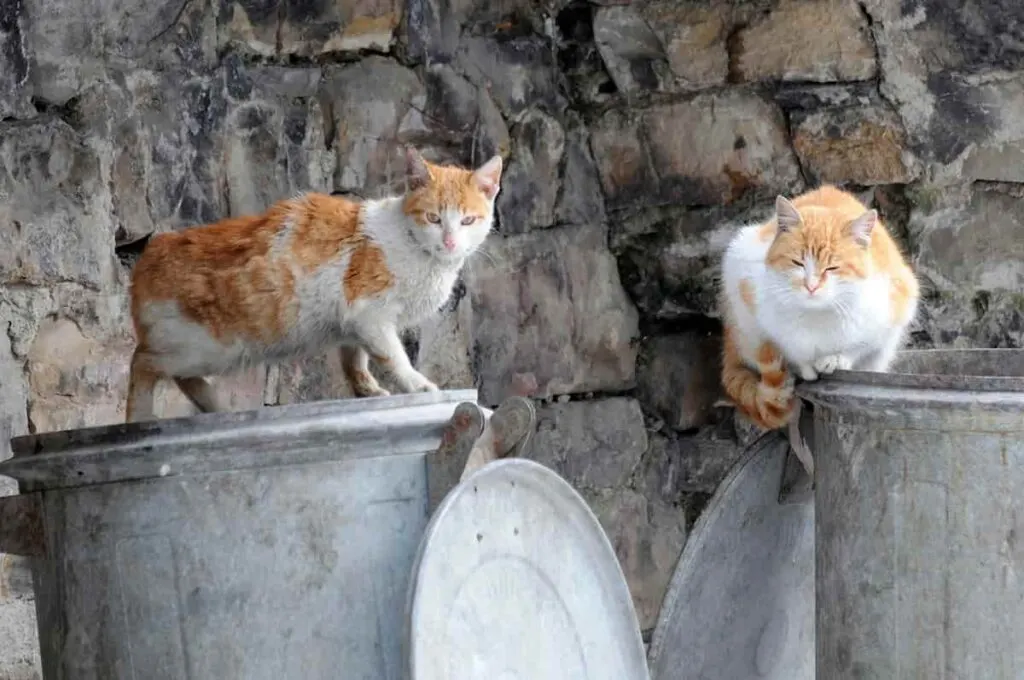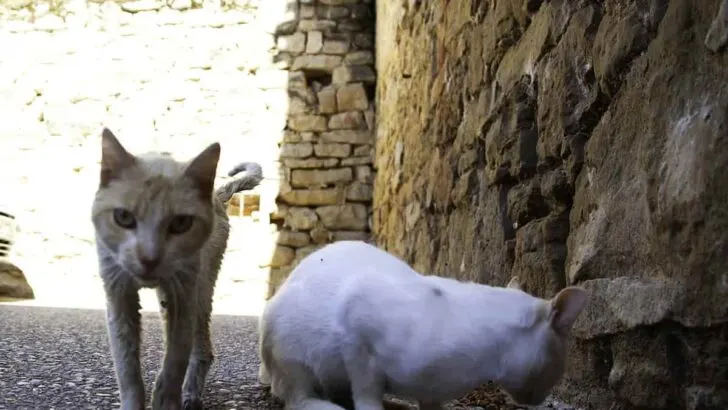Feral cats live tough life, facing numerous challenges and threats in their natural environment. The lifespan of these resilient animals is a topic of interest for many, as it sheds light on their daily struggle. In this article, we will discuss the average lifespan of a feral cat and the factors that play a crucial role in determining its longevity.
On average, feral cats tend to live for about 2-3 years, with many factors contributing to this relatively short lifespan. These outdoor-dwelling felines face threats such as predators, diseases, and ill-intentioned humans, impacting their overall health and well-being. However, when provided with regular care, including reliable shelter and daily feedings similar to the treatment of barnyard cats, their lifespan can extend up to 10 years.
Understanding the life of a feral cat and the factors that determine its lifespan not only piques curiosity but also carries vital information for those who wish to help improve the lives of these animals. By delving into the harsh reality of their existence, efforts can be made to reduce their risks and increase their chances of survival.

Life Span of Feral Cats
Feral cats have a significantly shorter lifespan compared to domestic cats due to the challenges they face in their outdoor environment. These challenges include predators, diseases, lack of consistent food sources, and ill-intentioned humans. In this section, we will look at the life expectancy of feral cats and compare it to that of domestic cats.
Feral Cat Life Expectancy
On average, feral cats live for only 2-3 years, significantly less than their domestic counterparts. This short lifespan can be attributed to the various threats they face while living in the wild, such as:
- Predators
- Exposure to diseases
- Scarcity of adequate food sources
- Ill-intentioned humans
These factors significantly contribute to the shorter life expectancy of feral cats when compared to their domestic counterparts.
Domestic Cat Life Expectancy
Domestic cats have a much longer life expectancy than feral cats, with the median age for pet cats being around five years. This can be attributed to factors such as:
- Regular veterinary care
- Consistent access to food and shelter
- Protection from predators
- Reduced exposure to diseases
With more stable living conditions and better care, domestic cats generally enjoy a longer and healthier life when compared to feral cats.

Factors Influencing Feral Cat Life Expectancy
Life expectancy isn’t always cut and dry when it comes to feral cats. Many factors impact this, namely nutrition and having to ward off predators. Let’s take a look at that and more.
Health and Disease
Feral cats are exposed to various health risks that can influence their life expectancy. They often lack access to regular veterinary care, making them more susceptible to diseases and parasites such as fleas, worms, and ear mites.
In addition, they are more likely to contract contagious illnesses like feline leukemia, feline immunodeficiency virus (FIV), and upper respiratory infections, which can significantly shorten their lives.
Nutrition
Proper nutrition plays a vital role in a feral cat’s life expectancy. Feral cats mainly rely on scavenging and hunting for their food, which may not provide them with all the essential nutrients they need.
Malnutrition can weaken immune systems, making them more susceptible to diseases and infections. Cats that receive better nutrition through human caretakers or access to adequate food sources tend to live longer.
Predators and Dangers
Feral cats face various predators and dangers in their environment. Predators such as coyotes, birds of prey, and other larger animals can significantly threaten their survival.
Additionally, they may encounter dangers from other cats, vehicle accidents, or encounters with malicious humans. These threats can significantly reduce the life expectancy of feral cats.
Weather and Living Conditions
Weather and living conditions also impact a feral cat’s life expectancy. Harsh weather conditions can make finding food, shelter, and clean water more difficult, leading to a decline in their overall well-being. Cats living in noisy, polluted, or heavily trafficked urban areas may experience higher stress levels, negatively impacting their health and lifespan.

Improving Feral Cat Life Expectancy
Feral cats face various challenges, often resulting in shorter lifespans than their domesticated counterparts. However, there are several ways to improve their life expectancy and overall well-being.
Trap-Neuter-Return Programs
One of the most effective methods to help feral cats is through Trap-Neuter-Return (TNR) programs. TNR involves humanely trapping feral cats, spaying or neutering them, and then releasing them back into their original environment. This process helps control the feral cat population and reduces the spread of diseases.
Furthermore, neutering and spaying decrease the risk of certain health issues, such as reproductive cancers, thus potentially extending the lifespan of feral cats.
Providing Food and Shelter
By offering adequate food and shelter, people can significantly enhance the quality of life for feral cats. Providing food, fresh water, and access to a safe, warm space can greatly improve their chances of survival, particularly during extreme weather conditions.
Remember that consistent food sources can also help reduce the need for feral cats to roam and hunt, which lowers their exposure to various dangers such as predators, injuries, and accidents. Be sure to provide shelter accommodating multiple cats and keeping it clean and dry.
Supporting Local Cat Rescues
Local cat rescues, and organizations often work tirelessly to provide resources and assistance to feral cats in their communities. They typically offer TNR services, advocate for feral cat rights, and educate the public about supporting these animals. By donating, volunteering, or even fostering kittens from feral litters, you can significantly impact the lives of feral cats.
Supporting these local organizations can help create a healthier environment for feral cats, ultimately increasing their life expectancy and overall well-being. For more information on local cat rescues, contact your community’s animal shelters or search for online resources.

My name is James, and welcome to FAQCats!
Along with our team of cat owners, expert pet enthusiasts, and pet professionals, we aim to write engaging helpful, engaging content about cats. At FAQCats we strive to provide content that’s accurate and fun to read. Our team writes about everything related to cats; even the most complex of topics. Through extensive research and caring for our own fur-pals, we’re able to provide something cat owners worldwide will love. Have a look around, and leave us feedback anytime!

